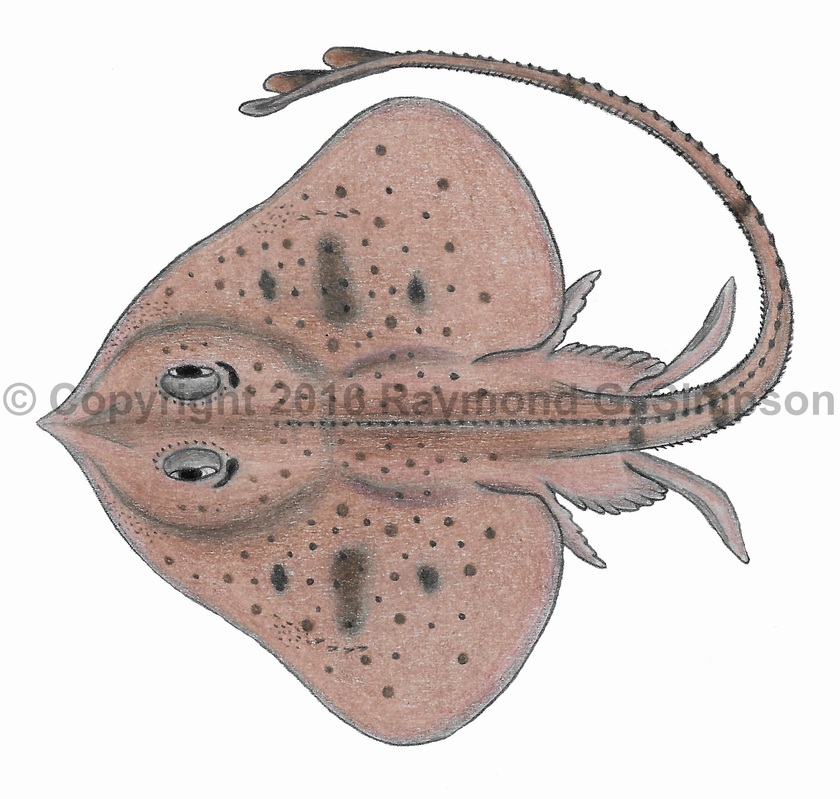
Common Name
Cuban Pygmy Skate
Year Described
Bigelow & Schroeder, 1950
Identification
Disk heart shaped with a almost straight anterior margin of snout and pectoral fin (concave pectoral margin in males). Snout blunt with short projecting lobe. Pectoral fins with round tips. Anterior pelvic fin lobe elongate; separated from posterior lobe by strong notch. Posterior lobe rectangular and much longer than anterior. Tail is long and thin. Posterior part of tail with skin folds. There are two small dorsal fins placed far back on tail with fins close together (gap less than half dorsal base). Caudal fin with developed upper lobe. Eyes and mouth large. Jaws with around 38-48 tooth rows. Male claspers long.
Body is covered with dermal denticles dorsally except for snout tip and posterior disk edge. Ventrum smooth. The rostrum has no thorns. There are 9-15 orbital thorns, 1-2 spiracular thorns, and around 6-8 nuchal thorns on the head. There are 1-2 scapular thorns. Abdomen and tail with a median row of 50-100 small thorns. Lateral thorns present on tail.
Color
Body pale brown with variably sized dark brown spots and speckles. A single large blotch on the middle of the pectoral fin is most evident in most specimens. The tail is crossed by five brown bands, two of which correspond to the dorsal fins and cross their base. Ventrum pale whitish.
Size
A very small skate: maximum size to 30cm TL.
Habitat
A fairly deepwater species found on soft bottoms on continental slopes (310-870m).
Range
Known from off Florida, Cuba, and the Bahamas.
References
Last, P.R., White, W.T., Carvalho, M.R. de, Séret, B., Stehmann, M.F.W & Naylor, G.J.P (Eds.). 2016. Rays of the World. CSIRO Publishing, Melbourne.